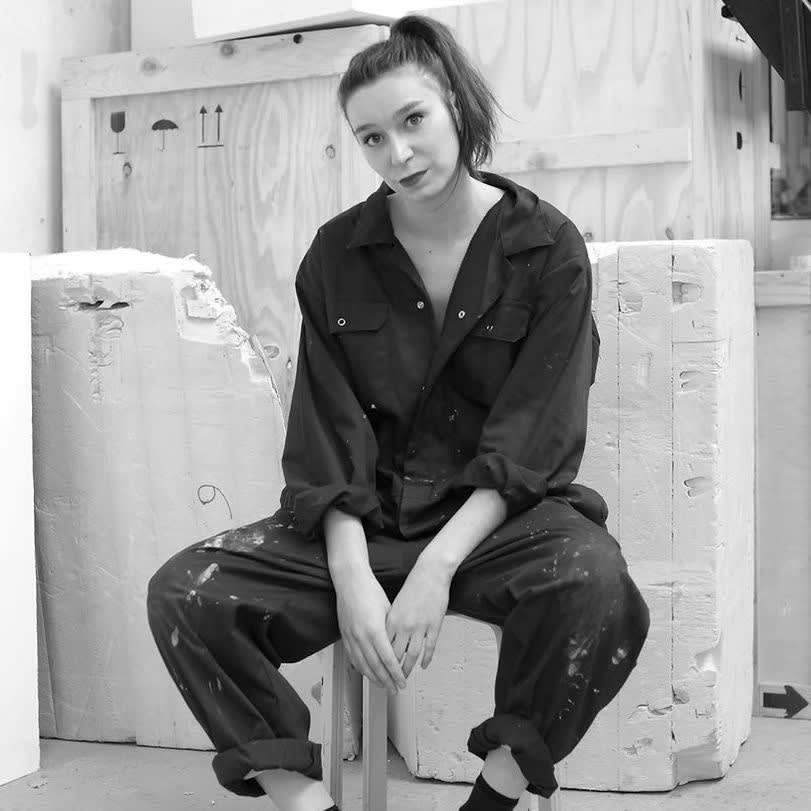Marlène Huissoud
-
-
BIOGRAPHY
 Marlène Huissoud lives and works in Paris, France. She graduated with an MA from London’s Central Saint Martins’ School of Art and Design in 2014, where she first developed the project From Insects: An Exploration of Insect Materials. Her work has been exhibited worldwide in major institutions such as Centre Pompidou, France; the Victoria & Albert Museum, UK; the Design Museum, Spain; Artipelag Museum, Sweden; and MAK Vienna, Austria. She is the recipient of numerous awards and has been named as one of the UK’s top 70 rising design stars. She represented the Future of British Design, organised by the UK’s Design Council in 2015.
Marlène Huissoud lives and works in Paris, France. She graduated with an MA from London’s Central Saint Martins’ School of Art and Design in 2014, where she first developed the project From Insects: An Exploration of Insect Materials. Her work has been exhibited worldwide in major institutions such as Centre Pompidou, France; the Victoria & Albert Museum, UK; the Design Museum, Spain; Artipelag Museum, Sweden; and MAK Vienna, Austria. She is the recipient of numerous awards and has been named as one of the UK’s top 70 rising design stars. She represented the Future of British Design, organised by the UK’s Design Council in 2015.Marlène Huissoud’s practice exists at the multiple intersections of design, art, architecture, science, and material innovation. She developed her Cocoon series from an innate interest in the use of organic, biological and sustainable materials in conceptually and aesthetically compelling design pieces. Her upbringing in the rural French Alpes, surrounded by her father’s activities as a beekeeper, influenced her to investigate the material possibilities of honeybee resin; this interest eventually led her to explore other insect-made materials, including silkworm cocoons. Marlène comments that, ‘I integrate insects with my work to help us to be more aware of other species: we are not alone on the planet and it looks like we’ve forgotten this. Insects are crucial and so important to us. I want to celebrate the beauty of the insect world; I would love for them to have more space on our dear planet.’
After extensive research and cross industry collaboration, Marlène devised a material using thousands of silkworm cocoons which are varnished with a thin layer of a dark natural honeybee bio resin. The cocoons are individually deconstructed with a fine needle and used as the underlying structure in her sculptural furniture works. She has also combined silkworm cocoons with the lost wax process to produce pieces in bronze. Marlène’s forms are charmingly ambiguous; playful shapes and variegated surfaces push the limits of functionality and highlight the possibilities for experimental design in society.
-
Works
-
-
 Marlène HuissoudCocoon Wardrobe, 2017Acquired by private collection
Marlène HuissoudCocoon Wardrobe, 2017Acquired by private collection
Silkworm’s cocoons, honeybee bio resin and oak base -
 Marlène HuissoudDouble Cocoon Cabinet, 2023Acquired by private collection
Marlène HuissoudDouble Cocoon Cabinet, 2023Acquired by private collection
Oak & silkworm cocoons -
 Marlène HuissoudCocoon cabinet #4, 2017Artist's collection
Marlène HuissoudCocoon cabinet #4, 2017Artist's collection
Silkworm’s cocoons and honeybee bio resin
-
-
EXHIBITIONS








